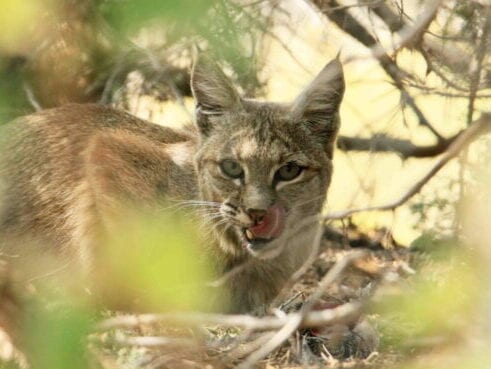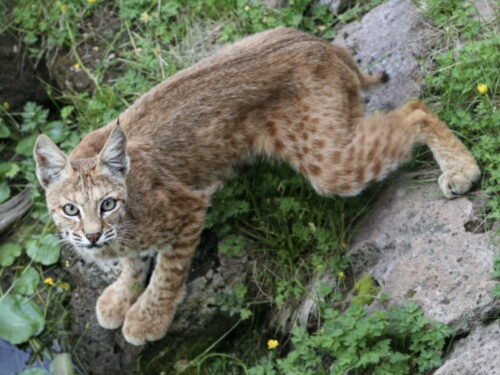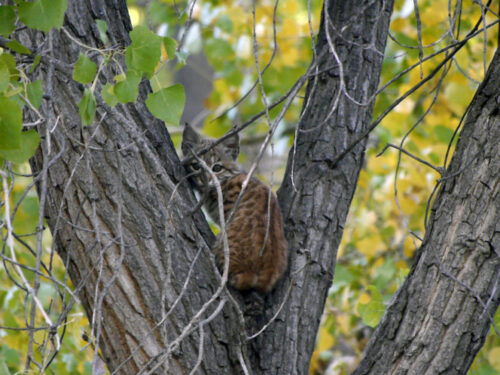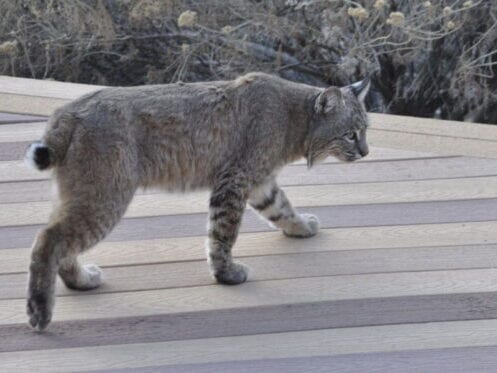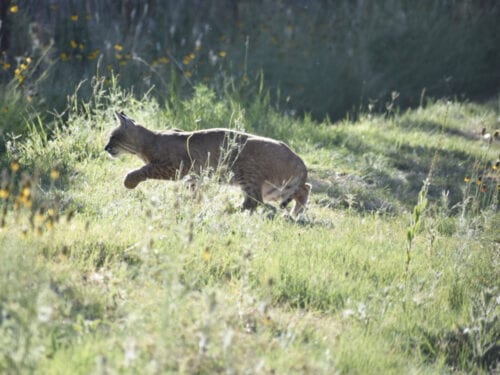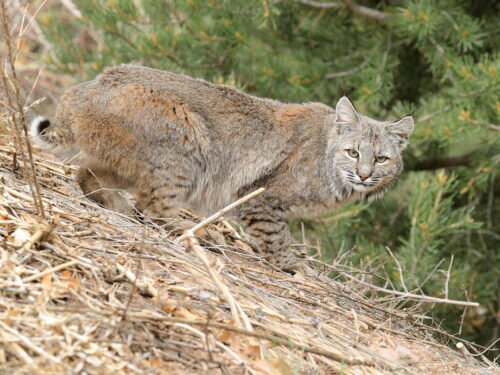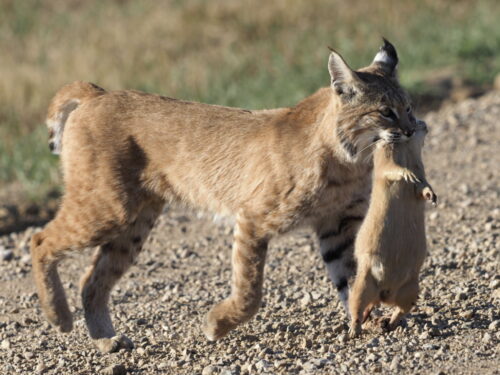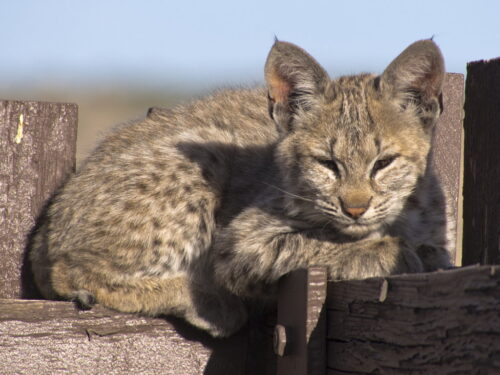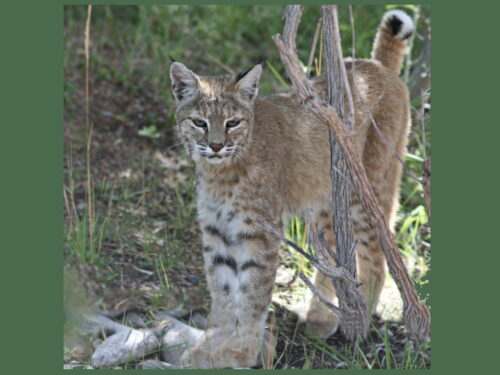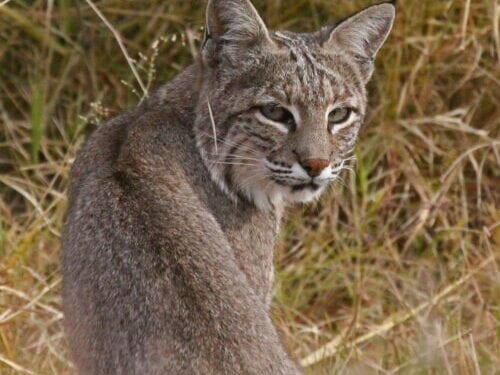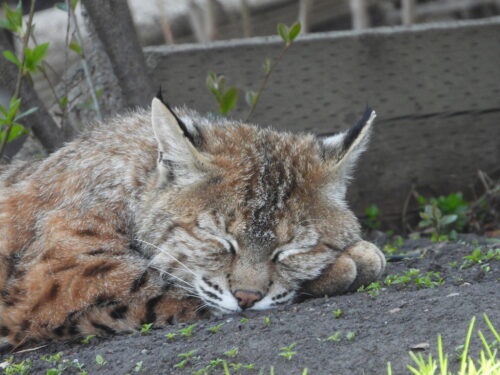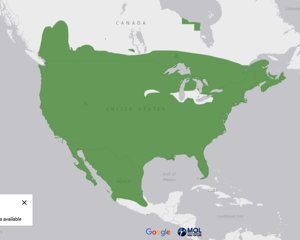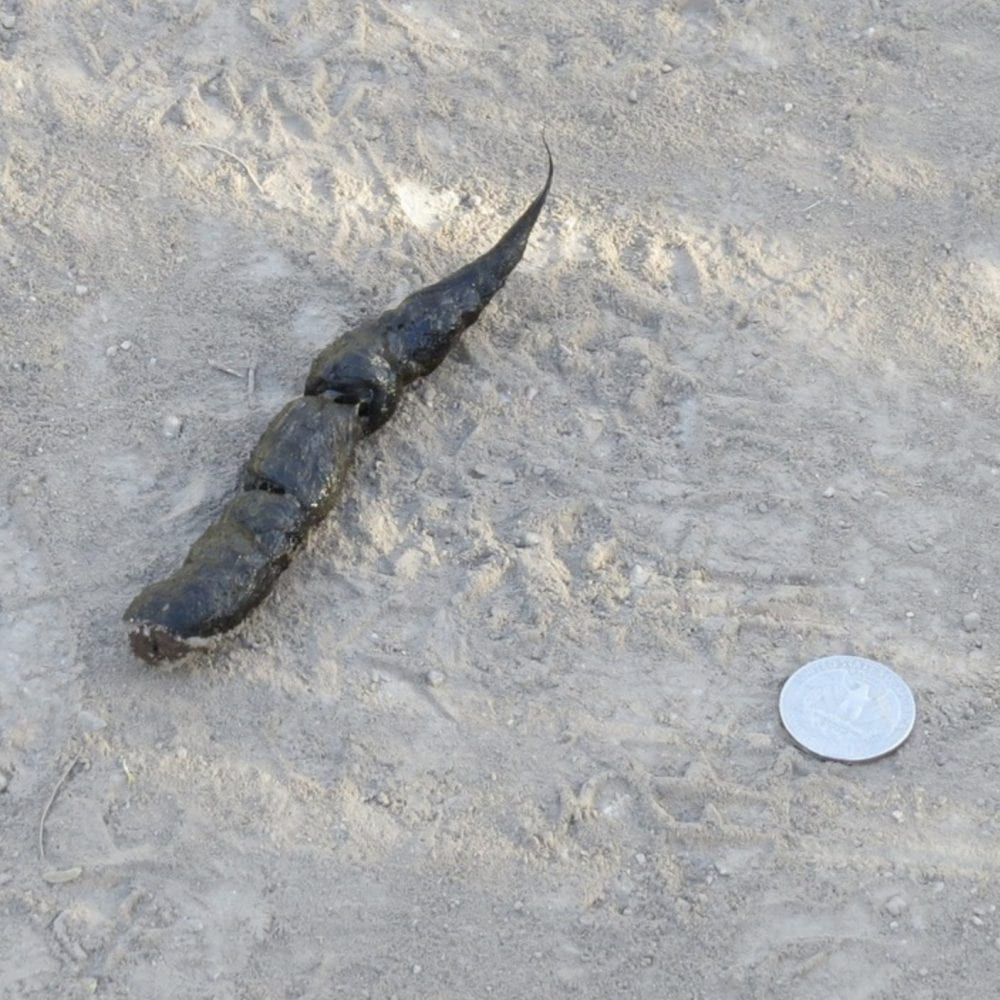Bobcat
Scientific Name: Lynx rufus
Type: Mammal
Family: Felidae (Cats)
Size: 18.7 to 49.2 inches long
Weight: 14 to 40 pounds
Life Span: 5 to 15 years
Color: Tan to grayish-tan with black streaks and bars
Physical Description
The bobcat has a black-tipped bobbed tail, black bars on its forelegs, pointed ears tipped with short, black tufts, and ruffs of hair beneath the ears. Due to the hair beneath its ears, its face has a wide appearance. Its coat can range in color from gray to brown.
The bobcat looks similar to other species of Lynx, although generally smaller. There are two recognized subspecies of bobcat: Lynx rufus rufus in the eastern and midwestern US and Lynx rufus fasciatus in the western US, southern Canada, and northern Mexico.
Range and Habitat
Bobcats are found throughout North America from parts of Canada to southern regions of Mexico. They have adapted to living in a variety of different habitats. They prefer rocky hillsides that are well-vegetated but can be found in mountain woodlands, coniferous forest, deserts, and even in suburban areas.
Diet
Bobcats mainly hunt small mammals like rabbits and mice. However, they will catch large ground birds and the occasional lizard. During the winter, they are known to hunt larger mammals like deer and to even feed on carrion.
Behavior and Social Life
Bobcats are solitary animals. They are most active for about three hours from sunset until around midnight and then again for about three around sunrise.
Bobcats are territorial and mark their territories with scents (urine, feces, and anal gland secretions) to warn other bobcats to stay out. In addition they will make scrapes in the dirt as a marker.
A bobcat will have numerous places of shelter within its territory, usually a main den, and several other shelters on the outer edges of its range. They use the outer dens for cover or to keep kittens close by while hunting. These shelters are often hollow logs, brush piles, thickets, or located under rock ledges. A den will smell strongly of the bobcat.
Bobcats have keen senses and are incredibly secretive. A bobcat hunts by sitting and waiting quietly while looking all around for its prey. Alternatively, a it may slowly creep up on an animal without being detected. A bobcat can then pounce and take the animal with a single bite.
Life Cycle
Males and females only interact during the mating season in February to March. Both males and females may have more than one mate. Though bobcats rarely vocalize, they make yowling and hissing sounds during the breeding season.
When it is time to give birth, a female bobcat will find a secluded den in which to raise her young. She will typically give birth to two or three kittens. The kittens will stay with their mother for up to a year. During that time, she will take care of them and teach them to hunt.
significantly affected. As top predators, bobcats keep the population of many mammals and birds in check.
Title
Tracks
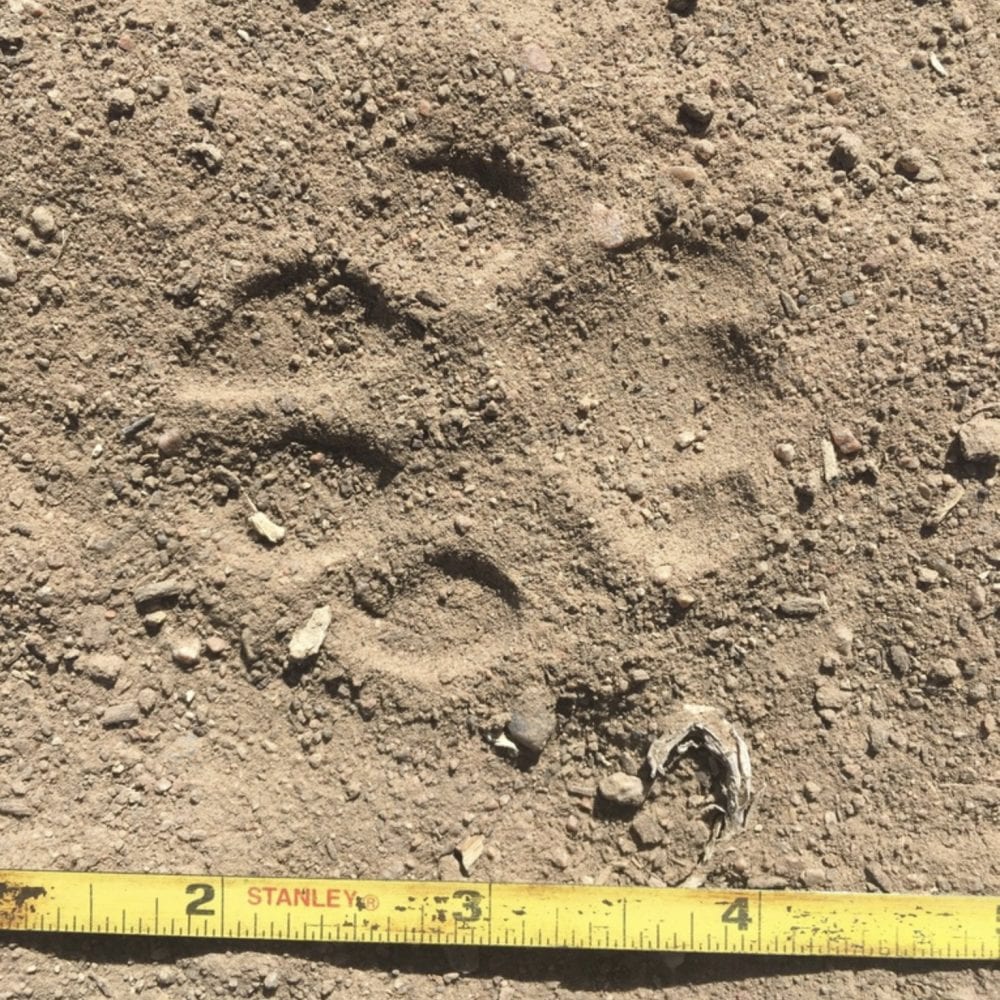
Skull
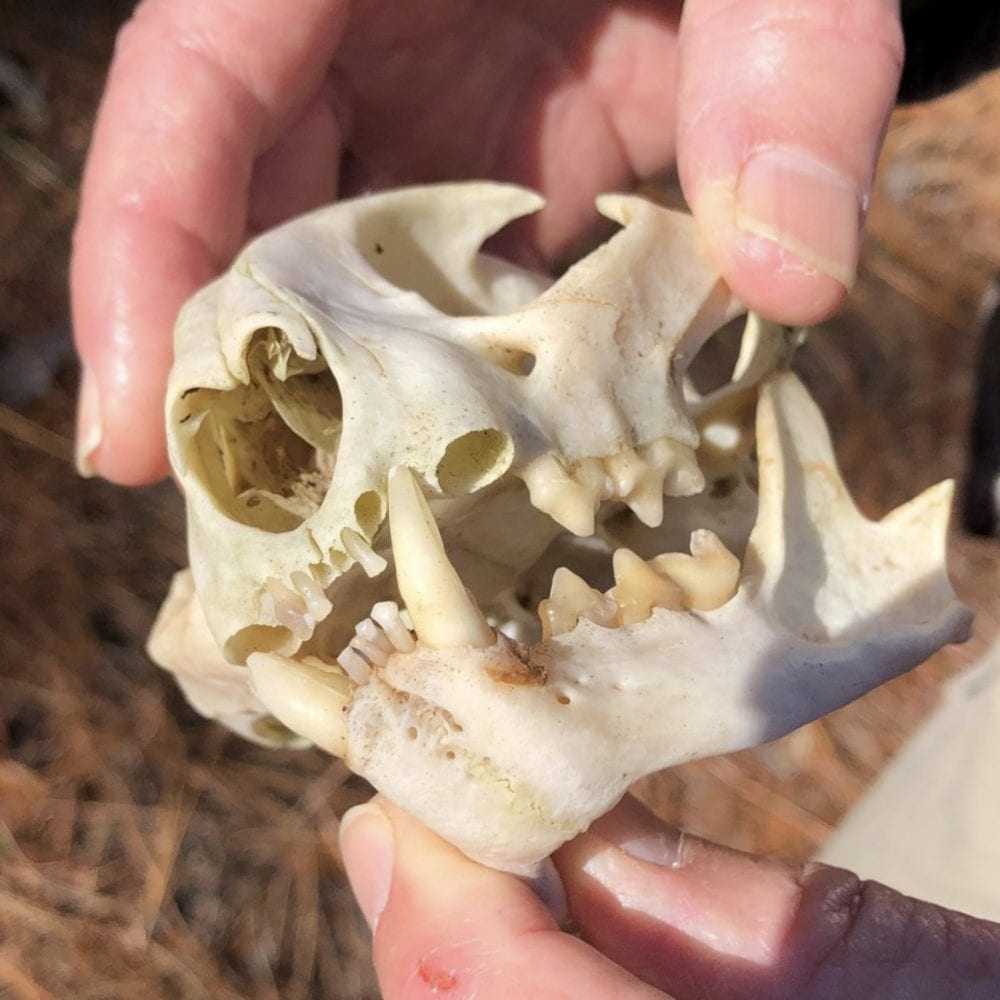
Scrape Marker

Ecological Role
The bobcat is a keystone species, meaning that in its absence the balance of the ecosystem would be would significantly affected. As top predators, bobcats keep the population of many mammals and birds in check.
Interactions With Humans
Bobcat pelts were so highly valued for their dense, soft fur during the early to mid-1900s, that many populations were essentially wiped out by hunting. Today such hunting is regulated.
Bobcats will occasionally eat small domesticated animals and small livestock. Causing them to be seen as pests in some areas.
Bobcats are are not particularly sociable and will most likely run away from people if they get near, only very rarely attacking. In general, bobcats are seldom seen even when they have taken up residence in cities and towns.
Interesting Facts
- There are 12 subspecies of bobcat.
- The bobcat is the most abundant of all of the North American wild cats and has the largest range.
- A bobcat’s scream can be heard for many miles.
- Bobcats have excellent vision, hearing, and sense of smell.
- Bobcats are very good swimmers.
- They are very skilled climbers, easily maneuvering over rocky terrain and climbing up trees to pursue prey.
- Bobcats can run at speeds up to 30 miles/hour for short distances.
- Bobcats are can leap up to ten feet in the air.
- A bobcat typically travels along a known route at night which can be up to 6 miles long.
- Bobcats can bring down prey that is up to double their own size.
- A bobcat’s territory can span out up to 30 square miles for males and 5 for females.
- Domestic cats have been known to care for orphaned bobcat kittens.

